After thousands of shots taken with a whale lens, and after viewing millions of images on the Internet, shot with high-aperture optics, sometimes you just want to try something new and fast. After the 'boring' stock lens that usually comes with a camera, the tiny Nikon 50mm 1: 1.8D AF Nikkor (MKIII) is a great addition.
Note that I call this the MKIII because it is the third version of the Nikon Nikkor AF 50mm F1.8 class lens. On the net it is usually called simply - Nikon 50mm F / 1.8D AF, any representation of letters is allowed :).
All Nikon 50 / 1.8 Autofocus Lenses
- Nikon 50mm 1: 1.8 AF Nikkor (first version, MKI) - the lens was produced only in Japan from 1986 to 1990. It is easy to distinguish by a window with a focusing distance and a narrow plastic focus ring. There are two subversions that are no different:
- MKI first subversion. Weighing 210 grams. It is easy to distinguish by the screw under the inscription '1: 1.8'. From September 1986 to March 1987. Serial numbers start at 2
- MKI second version. Weighing 165 grams. It is easy to distinguish by the absence of a screw under the inscription '1: 1.8'. From 1987 to 1990. Serial numbers start at 3.
- Nikon 50mm 1: 1.8 AF Nikkor (second version, MKII, also known as the 'N', or the 'NEW' version) - the lens was produced in Japan and China. The MK II version was produced from 1990 to 2001. There are three subversions that are no different:
- Nikon 50mm 1: 1.8D AF Nikkor (third version, MKIIIbetter known as 'D'-version) - the lens is available from 2002 to this day. All lenses are made in China.
- Nikon AF-S Nikkor 50mm 1: 1.8G SWM Aspherical (fourth version, MKIVbetter known as '1.8 G'-version or '1.8 AF-S' version) - the lens has been produced since 2011, all lenses are made in China.
- Nikon AF-S Nikkor 50mm 1: 1.8G SWM Aspherical Special Edition (fifth version, MKVbetter known as version 'Special Edition' or 'SE' or version for the camera with a retro design of the case Nikon Df) - the lens has been available since the fall of 2013. All lenses are made in China.
- Nikon Nikkor Z 50mm 1: 1.8 S, from summer 2018, lens for mirrorless cameras with Nikon Z mount... Diagram of 12 elements in 9 groups, 2 ED, 2 ASP.
Details on the lineup of fifty dollars from Nikon can be found in my article 'All Nikon autofocus fifty dollars'.
If you want to feel what aperture maneuver for real - Nikon 50mm 1: 1.8D AF Nikkor will help you very quickly. In this review, I will try to cover the specifics of using the Nikon 50mm 1: 1.8D AF Nikkor in real life.
As they say, the wizard casts a magic wand, and the sorceress uses a magic hole - it is the 'hole' (relative aperture of the lens) that attracts most of all in this lens, the maximum value of which is 1: 1.8. A lens with such a focal length and such aperture suggests that when focusing at close distances it will be easy to get 'bokeh effect'and blur the foreground and background.
Main technical characteristics of Nikon 50mm 1: 1.8D AF Nikkor:
| Review Instance Name | Nikon 50mm 1: 1.8D AF Nikkor 2860907 |
| Basic properties |
|
| Front Filter Diameter | 52 mm, plastic thread for filters |
| Body materials | Focusing ring plastic, rubberized on the outside. The outer case is made of plastic. Metal mount. The diaphragm control ring is plastic. |
| Focal length | 50 mm, EGF for Nikon DX cameras is 75 mm, EGF for Nikon CX cameras is 135 mm |
| Diagonal viewing angles | 46 ° for FX cameras, 31 ° for DX cameras |
| Zoom ratio | 1 X (this is a fixed lens without the ability to change the focal length) |
| Designed by | for film and digital cameras Nikon FX / Nikon DX. When the lens exited the Nikon digital cameras, only the cropped Nikon D1s were present, D1h, D1x и D100. |
| Number of aperture blades | 7 non-rounded petals |
| Tags | marking on the focus ring with the focusing distance in meters and feet, depth of field scale for F / 22 and F / 11. Label for working in the infrared spectrum (white dot near the depth of field scale). Ring with aperture values, there are marks for F / 1.8, 2.8, 4, 5.6, 8, 11, 16, 22. |
| Diaphragm | from f / 1.8 to f / 22. The lens has an aperture ring (Non-G - lens type) |
| MDF (minimum focusing distance) | 0.45 m, maximum magnification ratio 1: 6.6 |
| The weight | 155 g |
| Optical design | 6 elements in 5 groups. The lens does not use special optical elements.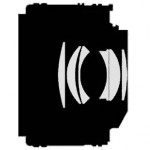 The image with the optical circuit is clickable. Lens version MKI и MKII use the same optical design. The image with the optical circuit is clickable. Lens version MKI и MKII use the same optical design. |
| Lens hood | Rubber hood Nikon HR-2. The lens hood is not included in the scope of delivery; the lens hood is screwed into the thread under the filters. |
| Transportation | Using the CL-S1 or CL-0715 soft case or using the CL-30S case. A case or case is not supplied and must be purchased separately. During transport, use standard rear (e.g. LF-1 or LF-4) and front (e.g. LC-52) covers. Usually sold with a white plastic translucent back cover. and black front. The lens is sold in a classic Nikon golden box (there are several modifications of the box design). |
| Period | from February 2002 to the present |
| Manufacturer country | Made in China (all MKIII lenses are made in China) |
| Instructions | See |
| 3D view | See |
| Price |
Nikon 50mm 1: 1.8D AF Nikkor (MKIII) - very lightweight lens. It has the smallest weight in its class. Due to its very small size and low weight, you can always take it with you. And finding a 52 mm filter is as easy as shelling pears. I really love hikesand every extra 100 grams of weight is a serious challenge, so instead of some heavy zoom lens I often use the Nikon 50mm 1: 1.8D AF Nikkor.
Nikon 50mm 1: 1.8D AF Nikkor smallest autofocus lens from Nikon that I have ever seen. There is a joke that it is in the pocket of every photographer. Just a joke, but I often keep Nikon 50mm 1: 1.8D AF Nikkor in my case, it takes up little space and I don't mind losing it.
Nikon 50mm 1: 1.8D AF Nikkor - one of the cheapest (if not the cheapest) fast fixed lens from Nikon. It is hard to find something cheaper. The lens will allow you to get the necessary experience for a little money when working with high-aperture optics, including fixed lenses. I almost always recommend the Nikon 50mm F / 1.8D AF as the first optional lens.
Nikon 50mm F / 1.8D AF can open the aperture up to f / 1.8. For example, an aperture ratio of 1: 1.8 is about 10 times morethan 1: 5.6. For example, class lenses 18-55/3.5-5.6 with the same focal length have 1: 5.6. F / 1.8 will allow you to shoot at low ISOs in low light conditions, use short excerpts when shooting handheld, and will also allow better control GRIP.
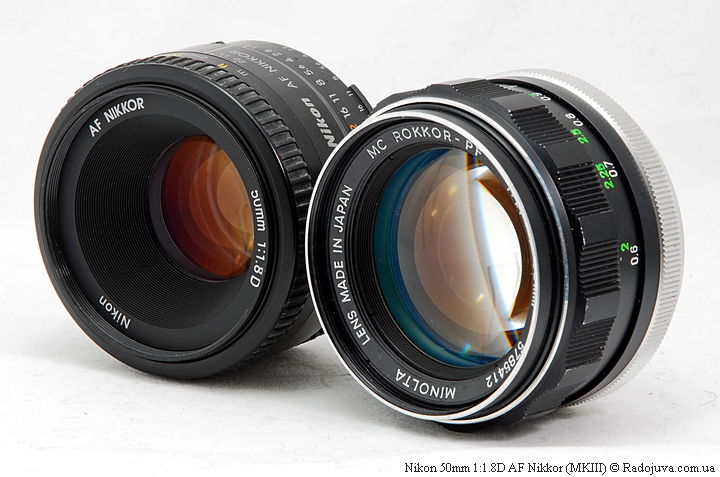
Nikon 50mm 1: 1.8D AF Nikkor (MKIII) and Minolta MC Rokkor-PF 1: 1.4 f = 58mm
Nikon 50mm F / 1.8D AF is very affordable lens, it is easy to find it in any store in any city. A huge number of copies of this model were released. Nikon 50mm f / 1.8D AF lenses are available with 2002 to this day.
It's a shame, but all Nikon 50mm 1: 1.8D AF Nikkor (MKIII) lenses are made in China. And here are his predecessors Nikon AF Nikkor 50mm 1: 1.8 (MK I) и Nikon AF Nikkor 50mm 1: 1.8 (MK II) produced in Japan.
The lens has fast auto focus system - on my camera, the lens focuses from 45 cm to infinity and back in one second. The most interesting thing is that his motorized brother Nikon AF-S Nikkor 50mm 1: 1.8G SWM Aspherical has exactly the same focusing speed. I tested both lenses together. Plus, the Nikon 50mm f / 1.8D AF focuses even faster than the flagship half a ruble - Nikon AF-S Nikkor 50mm 1: 1.4G.
Attention: the fact that the small Nikon 50mm 1: 1.8D AF has no built-in focus motor has nothing to do with focusing speed.
It's important: auto focus with this lens is available only when using him on cameras with built-in motor focusing.
Exact list Nikon DSLR cameras with a built-in focus motor, on which this lens will focus automatically:
- D1, D1h, D1x, D2x, D2xs, D2h, D2hs
- D3, D3x, D3s, D4, D4s, D5, D6
- Df
- D50, D70, D70s, D80, D90
- D7000, D7100, D7200,D7500
- D100, D200, D300, D300s,D500
- D600, D610, D750, D780
- D700, D800,D800E, D810, D810a, D850
- Fujifilm FinePix S1 Pro, S2 Pro, S3 ProS3 Pro UVIR, S5 ProIS Pro
- Kodak DCS PRO 14n, DCS Pro SLR/n
Exact list Nikon DSLR cameras without a built-in focus motor, on which this lens will not focus automatically:
Only auto focus and sound confirmation of focus will not work with these cameras, all other important functions, such as automatic exposure metering and automatic iris control, will work well.
You will find a lot of useful information on the types of cameras and lenses Nikon here.
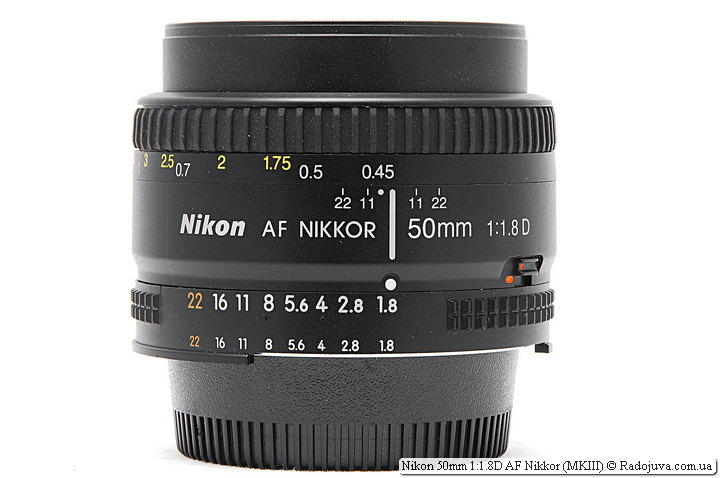
Nikon 50mm 1: 1.8D AF Nikkor (MKIII) while focusing at the minimum focusing distance (trunk extended as far as possible)
Attention: the lens has a manual aperture ring. To be able to control the value aperture from camera or for automatic installation aperture on modern central control valves, you need to turn the control ring to the F / 22 value (the value is colored in orange) and fix it with a special lever, which is located to the right of the marks aperture. If this is not done, then on a number of cameras, the display will display an error - 'fEE' (ring is not installed aperture) Some cameras having diaphragm rheostatallow you to control the diaphragm with this ring aperturebut only in metering modes exposure 'M' and 'A'. You can read more about this issue in the section on Non-G Lenses. Ring aperture rotates with clicks, the values F / 1.8, 2.8, 4, 5.6, 8, 11, 16, 22 are plotted on it, it is impossible to establish an intermediate value between pairs of numbers. This ring is useful, for example, for reverse macro shot.
Nikon 50mm F / 1.8D AF has focus distance scale. The scale is available in meters and feet, it is very nice and useful. For example, you don’t need to think in which direction the focus ring is rotated, just look at the lens for this. For example, a whale lens Nikon 18-55mm 1: 3.5-5.6GII VR II AF-S DX Nikkor It has neither a focus distance scale, nor a depth of field scale, nor an aperture control ring.
Nikon 50mm F / 1.8D AF has the ability to work on full frame the camera and is a Nikon FX type lens. On the Nikon DX cameras his EGF will be 75 mm. More details about FR and EGF in the section about 'crop factor'.
Nikon 50mm F / 1.8D AF has bayonet mount metal back... This is great news as many people think that the Nikon 50mm f / 1.8D AF is very lightweight and is made out of plastic.
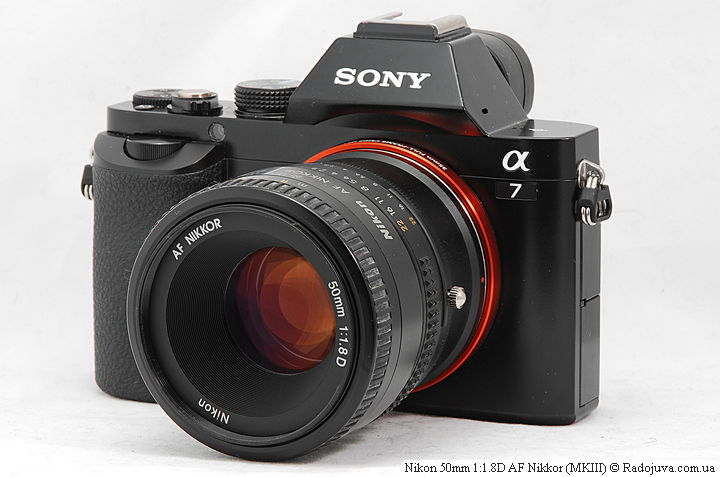
Nikon 50mm 1: 1.8D AF on camera Sony a7. The aperture control ring allows you to use the lens on any camera through the appropriate adapter.
When focusing front lens does not rotate. This allows you to easily use different filters and not worry about their shifts when focusing. The focus ring is rubberized and rotates 120 degrees, but in order to slightly shift the focus ring, you need to 'tear it off'. At the same time, smooth focusing is lost, since after such a “jerk” the ring flies over the desired value. The effort is not so great, but when working in macro mode, where, due to the very small depth of field, each degree of rotation plays a huge role, this “slightly twitchy” method of focusing greatly inflates the nerves during manual focusing. There is a similar effect on many other lenses, most pronounced on the 'dark' Nikon ED AF-S Nikkor 24-120mm 1: 3.5-5.6G SWM VR IF Aspherical. Nikon 50mm 1: 1.8D AF Nikkor users who always shoot with autofocus will most likely never notice the effect described above. Also, it is worth noting that the previous version of this lens, namely Nikon AF Nikkor 50mm 1: 1.8 (MKII, MIJ version)had no such problem.
Lens disadvantages:
- When using Nikon 50mm F / 1.8D AF lens on open apertures it is very difficult to achieve a sharp image... True, I noticed such a feature that sharpness disappears at apertures from F / 1.8 to F / 2.8. At f / 2.8-f / 8.0 aperture, the lens becomes very sharp.
- Nikon 50mm f / 1.8D AF pretty makes a lot of noise during auto focus. When you miss focusing, the lens buzzes annoyingly, and the camera motor scares small insects and nervous people, betraying the photographer in a quiet environment. Noisy autofocus has a very negative effect when shooting video.
- Nikon 50mm F / 1.8D AF does not have a built-in focus motor. As mentioned at the beginning of the article, it can be used with autofocus only on cameras with a focusing motor.
- There is no hood included with the Nikon 50mm F / 1.8D AF. The hood is attached by screwing it into the filter thread.
- When focusing, the entire lens block moves, while the 'lens trunk' extends forward.
- On the lens no focus mode switch, the transition to manual focus and back is carried out by means of a switch on the camera, which is located near the camera mount.
- The lens has a total of 7 non-rounded aperture blades that create 'nuts' in the out-of-focus area.
- The Nikon 50mm F / 1.8D AF is well built, but over time, a slight play in the focusing ring appears. If you shake the lens slightly, you can hear the tapping of the focusing ring. This is not a problem, just a small specific flaw.
With all the pros and cons Nikon 50mm 1: 1.8D AF Nikkor - an indispensable lens in all situations. For me personally, it is inconvenient in that the auto focus on my camera does not work Nikon D40which I often use. On the open aperture, the sharpness zone is very small and it’s very difficult to manually enter it.
All photos in the gallery below are shot on a Nikkor 50mm 1.8D AF and full-frame camera. Nikon D700 FX, photo without processing, only the size is reduced to 3MP and data from EXIF.
The gallery below shows photos from Nikon 50mm 1: 1.8 AF Nikkor NJ (NIKON JAPAN, MKII) without treatment:
Jpeg source photos download from this link (1.09 Gb). The archive is 453 photosfilmed in 6 months on Nikon D70. Oddly enough, but I enjoy working with this old and very cheap Nikon D70 both old and very cheap Nikon 50 / 1.8... The camera cost me $ 50, the lens - $ 90. On a 6 MP CCD sensor, even at F / 1.8, acceptable sharpness is obtained. I did not regret the shutter and filmed as much as my soul wanted. Photos from this collection are used by me in an article about choosing a Nikon DSLR. Examples of photos with processing can be found in my gallery here. You can see more examples of photos on Nikon 50mm 1: 1.8D AF Nikkor (MKIII) in the review Nikon D300 и Fujifilm FinePix S5 Pro и S1 Pro.
And also this link You can see my gallery of pictures obtained with the help of an old man Nikon D100 (Nikon's first digital SLR camera in a classic case) paired Nikon AF Nikkor 50mm 1: 1.8 (MKII, MADE IN CHINA).
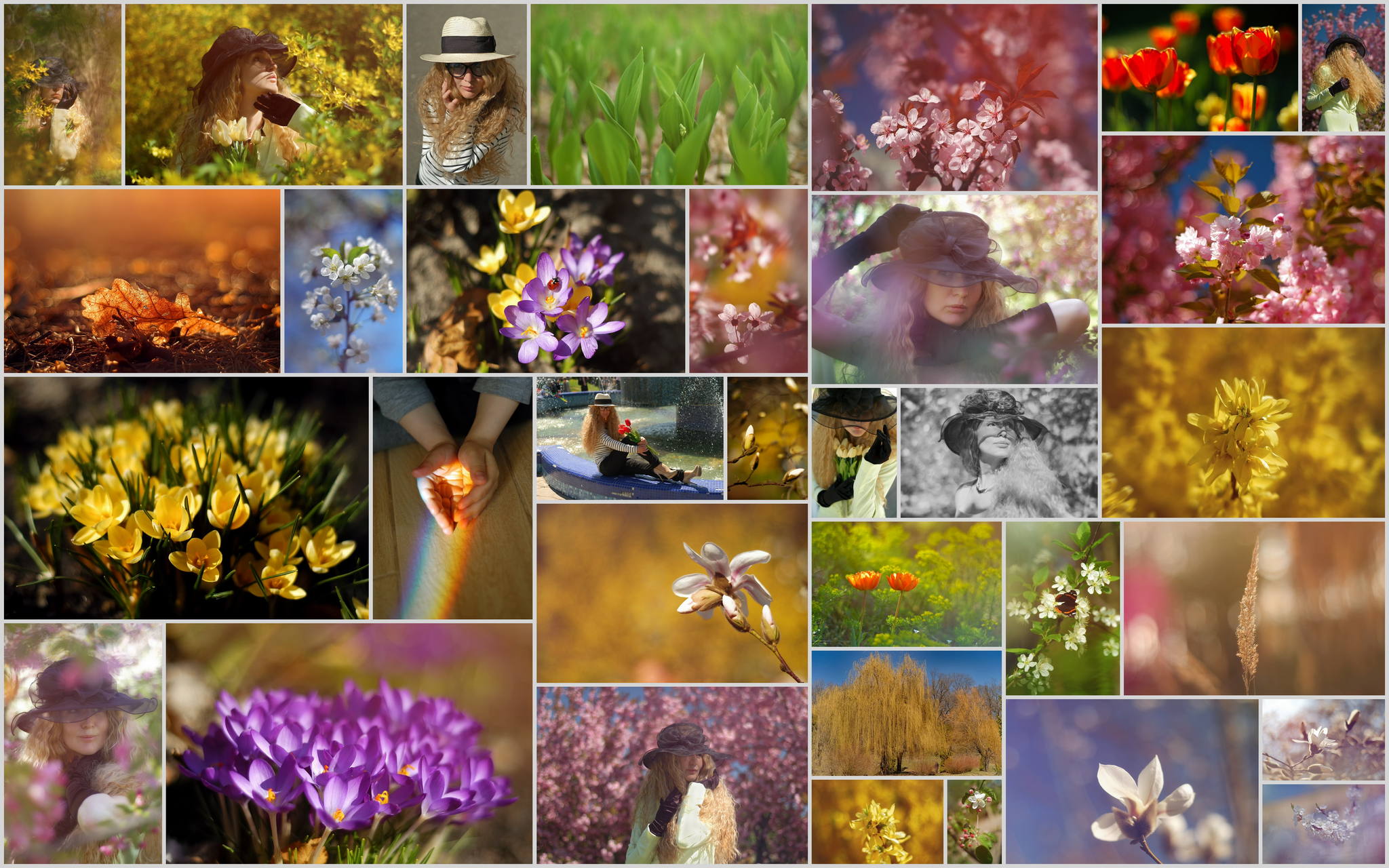
All pictures were taken with Nikon AF Nikkor 50mm 1: 1.8, MKII version, MIC (MADE IN CHINA) и Nikon D100. Enlarge Image or go to the gallery with large format photographs.
Video review
Short video review Nikon 50mm 1: 1.8 AF Nikkor NJ (NIKON JAPAN, MKII) you can see on my channel here.
Fifties Recommendations for Nikon Cameras
A list of all-all Nikon Nikkor autofocus lenses, as well as my recommendations for choosing the best option for specific tasks, can be found in the 'All Nikon autofocus fifty dollars'.
My experience
I really love the Nikon 50mm 1: 1.8D AF Nikkor. This is my first autofocus fast aperture lens, which I used in a wide range of photo tasks and spent a huge number of shoots with it.
As a result, Nikon 50mm 1: 1.8D AF Nikkor is:
- The easiest original full frame fixed focus lens with auto focus
- The cheapest Original fast prime lens with auto focus
- Most affordable Original fast prime lens with fixed focal length and auto focus in the secondary market. Countless instances of it have been released.
- The most compact original fixed focus lens with auto focus
- One of the fastest original autofocus lenses for FX and DX cameras (brighter only ten lenses with f / 1.4Unfortunately Nikon does not release aperture optics for FX cameras with support for autofocus)
- One of the best price / quality lenses
A huge number of lenses from Nikon (hundreds of models) passed through my hands. In my personal opinion, the Nikon 50mm 1: 1.8D AF Nikkor is one of the best lenses of all time from Nikon.
Lens prices
Real prices for the lens in popular online stores can see here, or in the price block below:
Also, this lens can be found on:
- Look at Power outlet
- Look in Connected
- Look at E-Catalog
- Look at Magazilla
- Look at M.Video
- Look at Ozone
- Look at Nadavi
- Euroset
- On the AliExpress
Comments on this post do not require registration. Anyone can leave a comment. Many different photographic equipment can be found on AliExpress.
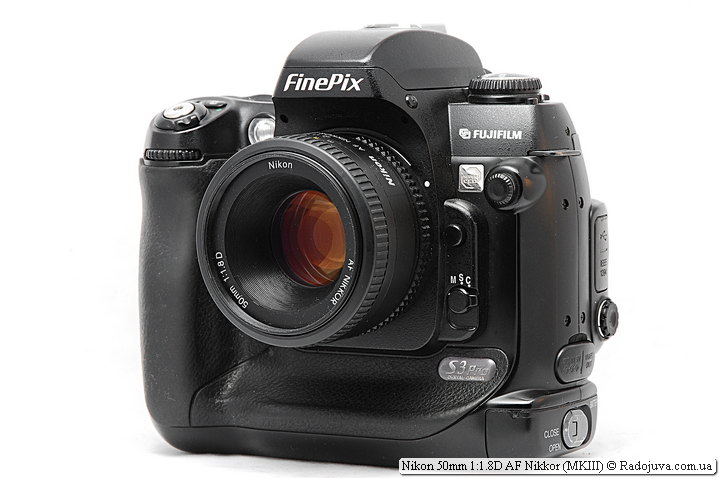
Nikon 50mm 1: 1.8D AF Nikkor on camera Fujifilm FinePix S3 Pro
Results:
Nikon 50mm 1: 1.8D AF Nikkor (MKIII) - great lens for the money... Due to its compactness and lightness, the Nikon 50mm 1: 1.8D AF Nikkor (MKIII) can always be taken with you. It can produce very sharp images with slightly rough bokeh. On DX cameras it can be used as a conventional portrait lens. The lens' only serious drawback is the lack of sharpness at apertures from F / 1.8 to F / 2.8.
UPDATE: in 2016, a Chinese lens appeared, based on the Nikon 50mm 1: 1.8D AF Nikkor optical circuit (optically no worse) and with an integrated focus motor. See YONGNUO 50mm 1: 1.8 review (YN50mm F1.8N).
Material prepared Arkady Shapoval. Training/Consultations | Youtube | Facebook | Instagram | Twitter | Telegram

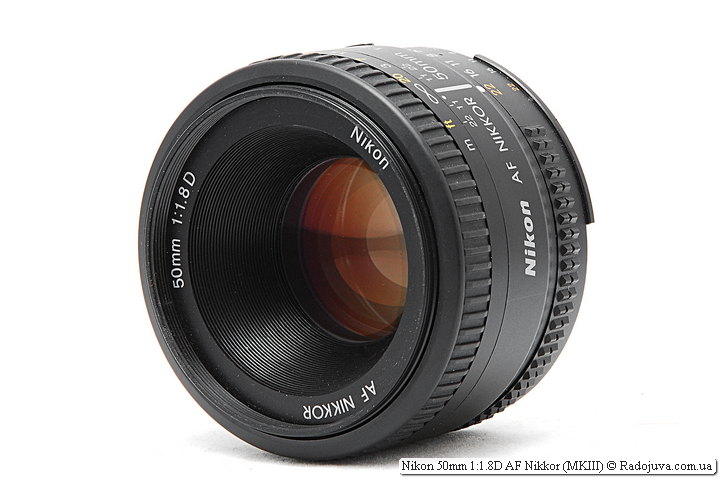
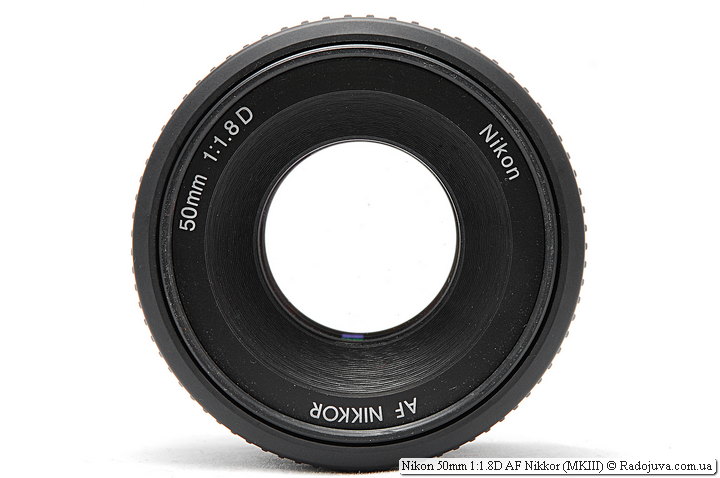
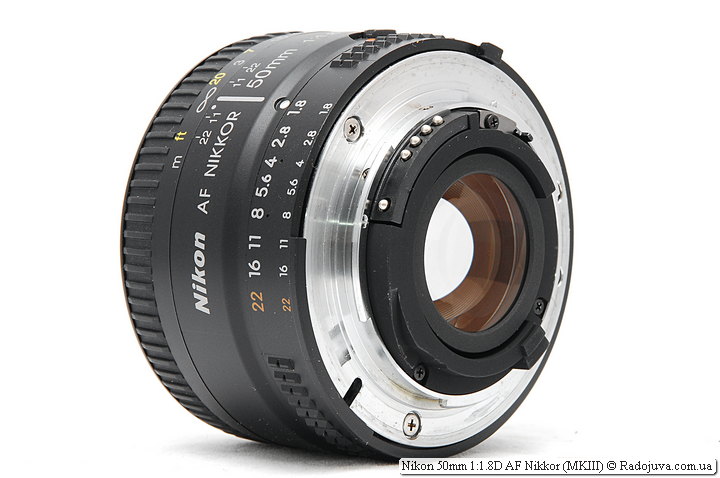
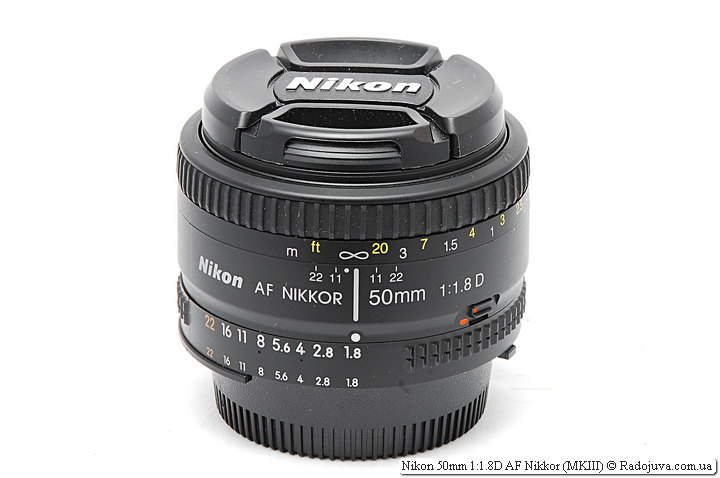
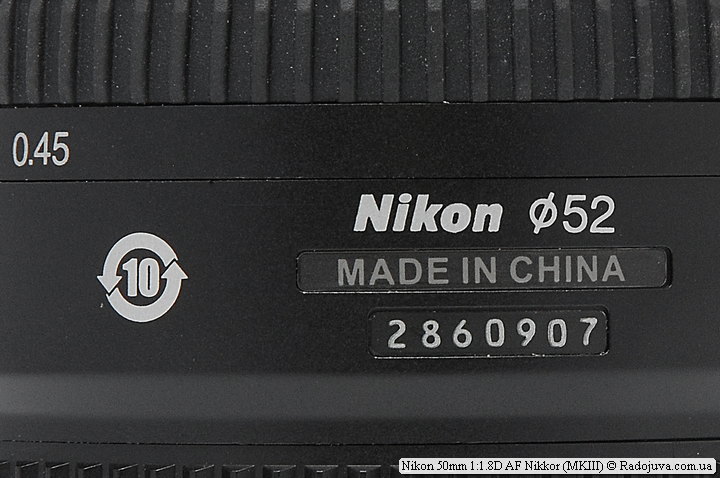

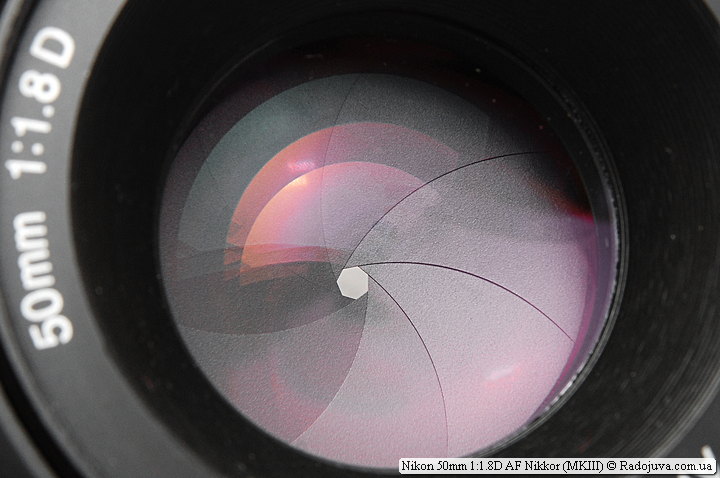

























































































































Arkady, thank you for your reviews, without you. As if without hands! And to the point: I want to buy a screwdriver fifty dollars, but without the letter "D" in the marking, that's all I found about him on the internet: http://www.kenrockwell.com/nikon/5018af.htm
I'd like to know your opinion, what are the differences from the “D” version. Is there any point in bothering with it? Or not to show off, but to buy a regular Nikon 50 f / 1.8D? Thank you!
1. Optically - this is the same lens, it is written about it here - https://radojuva.com.ua/2012/12/all-50mm-lens-nikon-together/
2. The difference between D, Non-D is described here - https://radojuva.com.ua/2012/03/nikon-lenses/#d-nikon
Maybe I came across a very unsuccessful instance of a non-D lens, but the difference between the modern Chinese D version and the old Japanese non-D on open apertures is huge. Mine begins to soap already on holes 3,5-4, generally fear is lower. Sharp snapshots of only 5,6 are already being taken. I shot them on the D50 and D90. If interested, I can give examples of images from this lens on open holes.
Arkady has Helios 81 ... is there still a difference besides autofocus?
Yes. Gelik is cooler.
Hello! I have a Nikon d90. What is the best lens for portraits and landscapes? I am offered Helios 50 mm - will it fit?
And can you make an increase in photo examples on the site?
Arkady, good afternoon. I own a D5100 camera. I want to make a gift in the form of a lens. So after reading your reviews here, I stopped at 2. Yes, I completely forgot to say there is no way to buy an expensive lens. Budget within 900 UAH. So, I stopped at 2 lenses: Helios 81-N (within 700 UAH) and Nikon 50 f / 1.8D AF Nikkor (within 900 UAH). More inclined to Helios, but somehow drawn to Nikkor. What would you suggest? The lens is not bought for a certain type of shooting. The lens will be used as a standard, everyday, that is, for everything!
Nikkor will be easier.
Yeah, that's just the D-version of fifty dollars at 5100 will lose the ability to autofocus.
And from the "manual modes" Gelik is still better.
Or take 50 / 1,8g
....
and "for everything" fifty dollars is too narrow.
Could you please clarify - will the Kiev Soviet optics with the H-mount (Helios-81n type) in Nikon D7000 type motor cameras autofocus? Or work only in M (manual) mode?
There will be no automatic focusing with Soviet lenses on any camera, it is described in detail in the section on old lenses (including Soviet ones) - https://radojuva.com.ua/2011/04/optika-na-nikon/#how-focusing
Good night! Such a question!
I have a Nikon d90! I install a lens Nikon AF Nikkor 50 MM F / 1.8 D
And then the carcass takes a picture only at aperture 22
everyone else when I turn on writes on the screen F 3 3 but triples the other way!
what could be the problem?
In order to be able to control the aperture value from the camera or to automatically set the aperture on modern CZKs, you need to turn the control ring to the F / 22 value and fix it with the special lever, which is located to the right of the aperture marks. If this is not done, then on a number of cameras, the display will display an error - 'fEE' (the aperture ring is not installed).
helios900n with a dandelion or nikkor will fit into the budget of 81 UAH, the functionality is the same, on a non-motorized camera, but 81 pictures are more interesting ...
This lens is considered the best lens (of all times and manufacturers) for reproduction shooting of painting on a small format frame. With aperture of 6,3, it has uniform sharpness throughout the field, zero distortion, high-quality color reproduction, negligible vignetting and chromatic aberration.
As for the overall resolution, according to DxOMark tests, it is one of the three sharpest Nikkors and surpasses (in the middle aperture range) ALL zooms without exception. But this is an "artistic" lens. For reportage photography, it is better to use optics, the pattern of which is approximately the same in the entire range of apertures.
My copy paints quite sharply throughout the field, starting from aperture 2,2. With a fully open aperture, it is better to use it as a portrait (on crop) or for subject macro photography (with attachment lenses). The drawing in this case is soft, picturesque, with slightly blurry corners.
This lens practically does not need a hood, because the front lens is deeply "recessed" into the frame. For the same reason, it is better to install a protective filter only in an aggressive environment (splashes, dust, etc.)
Is the Nikon d3100 suitable for a camera? How will he shoot on it?
What is better for nikon d3100 standard lens or etot? What is better?
How much has been described for this lens !!! He is worthy of the Guinness Book of Records. It is small, aperture, fast, cheap ... what is even more ???? !!!!! 24-120 ... 85 ... 18-55 ... 35 ... 24 .... these are all the lenses I have !!! But there are also 50 !!!!!! On d700 it's just a song !!!!!! Sometimes I notice that all other objects are just covered with dust ... even in the studio I sometimes put 85 out of laziness ... I just stomp my feet towards the model !!!!! This is one of the best lenses !!!! If its price were $ 500, it would be worth it ... and this is the paradox ... on my d700 it stands all the time !!!!!!
This is about which lens such a choke?
Sorry 81….
Hello. How does the D90 cope with this lens in terms of focus accuracy? I've heard that you often have to finish it. Thanks. Is there a choice between the D90 and D200 for such an objective, which is preferable? Thanks
Good day, and if you attach this lens to the canon 600D via an adapter with a chip, will the exposure meter work fine?
Yes, good.
Good afternoon, Arkady. I have a Nikon D5100 camera, I want to buy a Nikon 50 f / 1.8D AF Nikkor. How will it show itself with macro rings? Thanks.
Hello, please tell me, with a Nikon 50 f / 1.8D AF Nikkor lens, at what aperture and shutter speed will the photo be better? Thanks
Alice, in the article it is written several times, 1.8 - 2.8 a little soap. you need sharpness at 100%, then set less than 2.8.
In general, thanks for the review! I have in the arsenal for my DX camera 35, 18-270 and 11-16.
Found 50mm under the tree .. From afar I saw a brown box and my happiness knew no bounds! )) Here is such a good girl with me)) I wish you all useful useful gifts)))
The fact that almost all lenses are washed on open holes is kind of like a fact. Some lather more, some less, but lather. So, as I think. If for 50 \ 1,8 the aperture is 1,8-2,2; 2,5 is still open, and you need to clamp the aperture to achieve sharpness, then for 50 \ 1,4 the same 2,2 is a good aperture . That's the difference in the picture. It is up to everyone to decide whether this difference in the picture is worth the difference in the price of these two glasses or not.
Tell me a good lens on the nikon d7000 from the helios series.
MS Helios-81N
Hello! I am interested in this lens: Nikon 50mm f / 1,8
http://molotok.ru/af-nikkor-501-8-i3834713276.html
Do you know him? I did not find information on it on the network.
This is an earlier version of Nikkor 50mm 1.8D AF without the ability to transfer the focusing distance to the camera, all versions and their differences are described in detail here - https://radojuva.com.ua/2012/12/all-50mm-lens-nikon-together/
I have one! Constantly pleases me (and the inscription made in Japan +1 to pride), the picture on the D90 is super. Draws softly and very nice!
By the way, recently I began to notice that in the limit of 5 meters it focuses perfectly, and if further, then the focus is not for the target. If you compare a regular photo and a photo taken in live view, the difference is clearly visible.
Maybe someone noticed the same?
Arkady, tell me please.
I have a Nikon D90 and a Nikon 50 f / 1.8D AF Nikkor lens.
Sometimes autofocus gets lost, i.e. I focus on the face - and the hands are sharp, lying on the table, which are closer, BF and FF seem to be absent.
I asked a friend he had such a lens before, also sinning with this, often lost his way. He said that 1,8G got to him was deprived of these shortcomings.
Does it happen on these lenses that the focus goes astray? or is it not a very good specimen caught?
and the second question, which fifty dollars is better to take in terms of sharpness, bokeh, and with the subsequent possibility of switching from D90 to Full Frame? 1,8G or 1,4D or 1,4G?
Additionally. I rent mainly 1,8 since I want more background blur. By the way, sometimes at 1,8 the sharpness is good, and sometimes it gets off and lathers the face even at 2,8 (((
Additionally. I read the rest of your articles. Thanks so much for the reviews. I will delve into)
do not tell me to manually control the diaphragm, the error is written. d700 nickname has to be set to auto
It seems everyone is faced with such a question. like that, I asked the same to the cheb. The answer is found in the same place. Set aperture 22, snap. And everything will work. The aperture will change on the camera. When manually set on the lens, a diaphragm other than 22 indicates an error. So it should be, do not worry.
Hello.
The article says that you can damage the focus motor in the camera. Hence the question of whether it is possible to somehow determine whether he is a worker or not. I recently purchased a Nikon D90 complete with an 18-105VR lens. Thanks.
Hello, tell me please, I have such a problem - my Nikon 50 f / 1.8D AF Nikkor does not want to work in autofocus for the life of the Nikon 7000, I seem to be doing everything right, I fix the hole at 22, the phot recognizes it in manual focus, everything is ok, but on the machine it does not go, no matter what I tried and AF-s and AF-c, and point focus ... does not want
On the camera, set the lever under the lens to autofocus and that's it ...
Hello Arkady, I am offered to purchase a Nikon 50 f / 1.8 AF made in Japan, they ask me for 1.5 times more expensive than the new China. Tell me if there is a fundamental difference between this lens and the lens from the review, or not worth overpaying. Thank you in advance.
It makes no difference, but take the Nikon 50 f / 1.8G right away.
help a beginner) nikon d 7000 camera, 50 mm / 1.8d lens
I switched the camera to M mode with the focus mode switch, and AF-A is displayed on the screen, should it be?
Good day Arkady! Tell me, please, will this lens function normally on the D90 with a flash, for example Nikon Speedlight Flash (SB-700) or Nikon Speedlight Flash (SB-910)? Thanks in advance :-)
Will function perfectly.
Thank you!